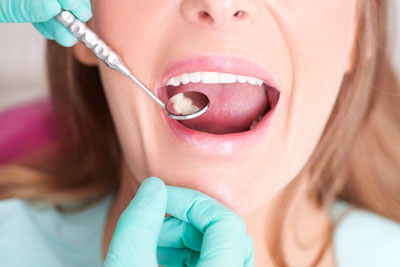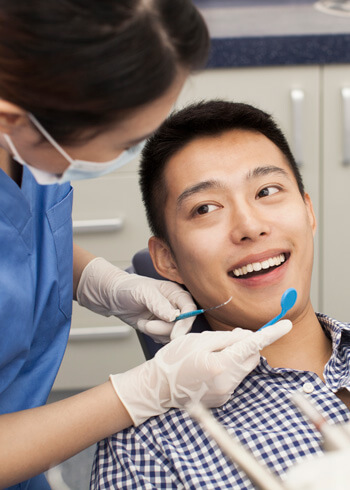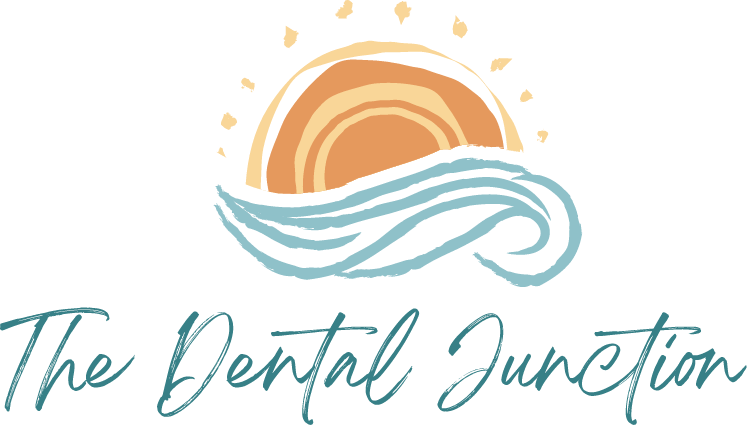Tooth Extraction in Noosa
Common Reasons for Needing a Tooth Extraction
Gum Disease: Severe gum disease (periodontitis) can lead to tooth mobility and bone loss, necessitating tooth removal.
Impacted Wisdom Teeth: Wisdom teeth (third molars) often become impacted or cause crowding, leading to extraction.
Infection or Abscess: A severe tooth infection or abscess that cannot be resolved with antibiotics and root canal therapy may lead to extraction.
Orthodontic Treatment: In some cases, teeth may be extracted to improve the outcome of orthodontic treatment.
Dental Trauma: Teeth damaged due to accidents, sports injuries, or other traumatic events may need removal.
Supernumerary Teeth: Extra teeth that develop, known as supernumerary teeth, can cause problems and may require extraction.
What to Expect
 During your visit, we will thoroughly examine and review X-rays to determine if an extraction is necessary. Our priority is to ensure that all possible alternatives, such as crowns, fillings, or other treatments, have been explored before proceeding with an extraction.
During your visit, we will thoroughly examine and review X-rays to determine if an extraction is necessary. Our priority is to ensure that all possible alternatives, such as crowns, fillings, or other treatments, have been explored before proceeding with an extraction.
If an extraction is deemed necessary, we will administer a local anaesthetic to numb the area around the tooth. This ensures that you will feel comfortable during the procedure.
After the extraction, it’s essential to allow your blood to clot and start the healing process in the empty socket. To facilitate this, we will place gauze in the area to promote healing.
Pain & Healing
The healing time after a tooth extraction can vary depending on several factors, including the type of extraction, the individual’s overall health, and the specific tooth extracted. However, here is a general timeline of the healing process:
Initial Recovery (First 24 Hours)
In the first 24 hours after the extraction, you may experience bleeding, swelling, and discomfort. To control bleeding, you should bite down on a gauze pad over the extraction site. Swelling can peak on the second day and gradually subside.
Days 2-3
Pain and swelling typically start to decrease, but some discomfort may persist. You should continue to follow post-extraction care instructions, including resting and avoiding strenuous activities.
Days 4-7
Most of the acute symptoms should have improved or resolved by this point. The gum tissue at the extraction site will start to heal and close. Continue to avoid hard or crunchy foods and maintain good oral hygiene practices.
Days 7-14
By the end of the first week and into the second week, the extraction site should be well on its way to healing.
Post-Extraction Instructions
 Follow Your Dentist’s Instructions. Your dentist will provide specific post-extraction care instructions. It’s crucial to follow these guidelines carefully to ensure proper healing.
Follow Your Dentist’s Instructions. Your dentist will provide specific post-extraction care instructions. It’s crucial to follow these guidelines carefully to ensure proper healing.
Bite on Gauze. After the extraction, bite down on a gauze pad placed over the extraction site to control bleeding. Change the gauze as instructed.
Rest. Take it easy for at least 24 hours after the extraction. Avoid strenuous activities and rest as much as possible.
Swelling and Ice. Apply an ice pack to the outside of your cheek in the first 24 hours to reduce swelling. Use it for 20 minutes on and 20 minutes off.
Pain Management. Take any prescribed or over-the-counter pain medications as your dentist directs to manage pain and discomfort.
Diet. Stick to a soft diet for the first few days, including yoghurt, pudding, mashed potatoes, and soup. Avoid hot and spicy foods. Avoid using straws, as the sucking motion can dislodge blood clots.
Oral Hygiene. Maintain good oral hygiene, but be gentle around the extraction site. You can typically resume brushing your teeth the day after the extraction, but avoid the extraction site. Avoid vigorous rinsing or spitting, as it can dislodge blood clots and delay healing.
Avoid Smoking and Alcohol. Do not smoke or consume alcohol during the initial healing period, as they can hinder the healing process.
Avoid Certain Foods and Habits. Avoid hard, crunchy, or scorching foods and beverages that may irritate the extraction site. Do not chew on the side of the mouth with the extraction for a few days. Do not touch the extraction site with your tongue or fingers.
Follow-Up Appointments. Attend any follow-up appointments as scheduled to monitor your healing progress and remove sutures if necessary.
Home Care
After undergoing a tooth extraction, it is essential to take proper care of the extraction site to ensure proper healing and minimise any discomfort. This includes taking over-the-counter pain medications, which may help with tenderness in the days following the procedure. It is recommended to take these medications before the anaesthesia wears off to prevent excessive pain. Additionally, if you notice any swelling in the extraction site, using ice packs could help reduce it.
Book an Appointment
If you suspect you may require an extraction, contact The Dental Junction today to schedule an appointment.
* Any surgical or invasive procedure carries risks. Before proceeding, you should seek a second opinion from an appropriately qualified health practitioner.


